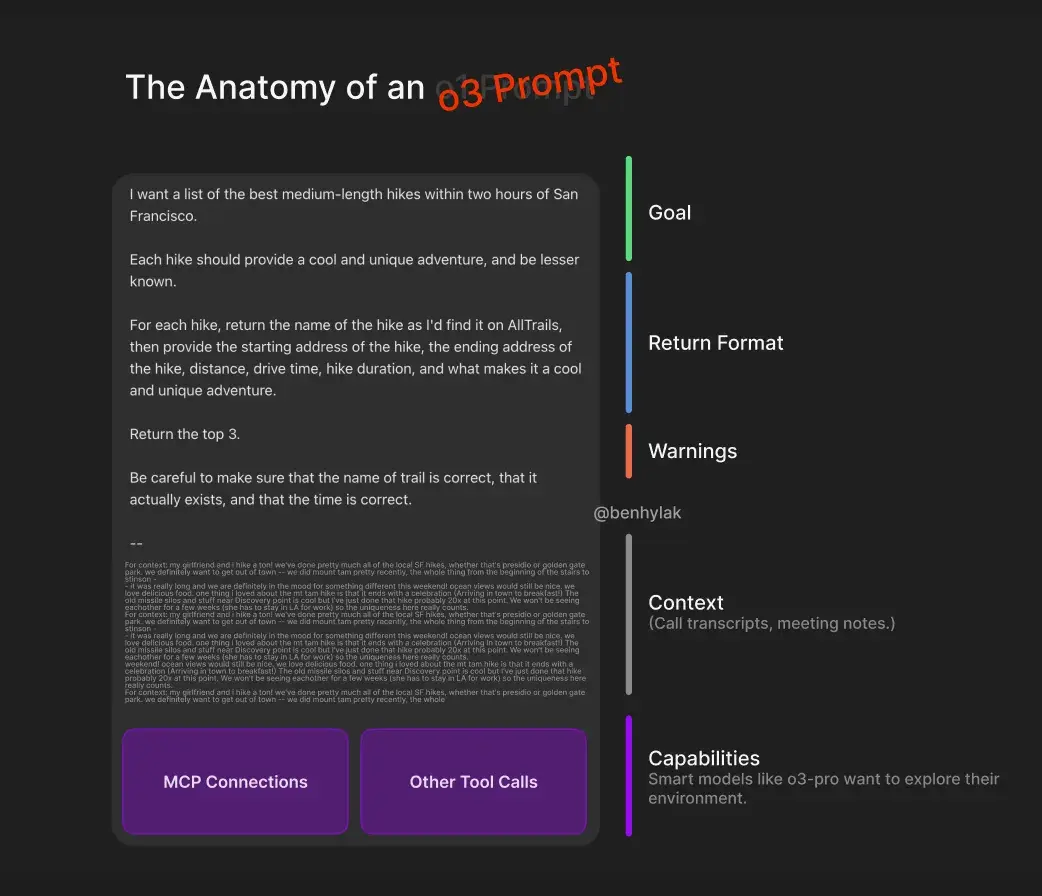As a product engineer with 10 years of experience focusing on end-user engagement metrics, I've watched the AI assistant race with fascination. Here's my analysis of the current gap between Claude and ChatGPT.
Disclaimer: Everything in this post will be outdated in weeks or months. That's the nature of this space.
The Context Revolution
When ChatGPT enabled memory by default, it solved the gap many AI users have been complaining about - persistent memory and context. Context is everything now: ask the right question and you will likely be happy with the answer you get.
On launch, I used OpenAI o3 for everything: business planning, analyzing my meetings, serving as a research assistant, vetting and challenging my plans. I bought the hype. "April 16th was called AGI day" and the staggering improvements of reasoning models became clear.
Credit where credit is due: ChatGPT and its latest models are true innovations. OpenAI achieved something magical, and I've been overall blown away by the product.
But this article isn't about technological achievements - it's about product and user experience. And I, like many power users, have grown increasingly frustrated with ChatGPT's UX.
The Prompt Engineering Problem

Look at the complexity here: system prompts, role definitions, output formatting, context windows. What started as simple chat has evolved into a technical skill that most users will never master. This is the UX problem ChatGPT hasn't solved.
Prompt engineering is hard, and for most users, profoundly unintuitive. We've come a long way from Google searches like "best pizza NYC" to crafting carefully structured prompts for highly personalized, context-aware AI responses.
OpenAI was clearly thinking about this when they launched memory by default. The dream scenario: you mention a specific preference for pizza months ago, then when asking for dinner recommendations, ChatGPT "remembers" and recommends pizza.
This is the super-app AI dream: an assistant that knows everything about you, serving hyper-personalized answers. It's a vision many are excited about.
And it simply doesn't work.
It turns out, sensible defaults win the day. Users don't want to engineer prompts - they want AI that already knows how to help them.
Enter Claude
OpenAI has been ruthlessly pushing the technology forward, locked in a deathmatch with other tech giants to build the killer app. But like many engineering-led companies, they're struggling with the last mile: user experience.
This is where Anthropic has quietly stepped up.
On first glance, Claude looks practically identical to ChatGPT. Same chat interface, similar capabilities. But to users, it simply feels better.
Claude is having its iPhone moment - when a product becomes the default recommendation. At a family dinner this week, 3 people were sitting at the table on their phones, all using Claude. The shift happened fast.
The Subtle Differences That Matter
Here's the breakdown of why Claude is winning hearts and minds. These differences are relatively minor on paper, but their impact is enormous.
Personality
I asked my wife, a trained therapist, about these differences:
"To me, Claude feels like a professional assistant, where ChatGPT is more moldable. Claude is set up to make it easy for me, but ChatGPT takes a lot of coaching to be more personable. Claude also comments on its own answers which made it feel like it was actually listening to me."
This isn't about raw capability, reasoning, or anything deep about the model. This is style, vibes, the last 20%, which often gets neglected in tech.
User Experience
The interface differences are subtle but meaningful:
- Claude's opening: "How can I help you today?"
- ChatGPT's opening: "Ask me anything"
My wife's observation: "Claude puts more emphasis on help and service, versus this endlessly moldable thing. It makes Claude feel more approachable."

Take a moment to consider the subtle differences between these two (nearly identical) interfaces. For each difference, which do you prefer?
Language and Tone
The language patterns reveal different philosophies:
- Claude: "How can I help you?" - more relational, service-oriented
- ChatGPT: "What can I help with?" / "Ask Anything" - more logical, problem-focused
Claude is opinionated. It oddly feels more human despite being less customizable (no persistent memory). It's willing to push back, to have preferences, to admit uncertainty in ways that feel genuine rather than scripted.
My Advice
To OpenAI: Take Jony Ive off the hardware project and fix your UX first. You have the best technology, now make it feel nice to use.
To Anthropic: Keep doing what you're doing
To everyone else: Try Claude. Give it a week. See if you find yourself switching back.
In Closing
In consumer products, feelings beat features. There's a reason most of my friends have iPhones, even though Android phones have plenty of extra features.
The AI assistant wars are just beginning. OpenAI will respond, Google will iterate, and new players will emerge. But right now, in this moment, Claude is leading the way in consumer AI tech.
What's your take? Email me: noah@10xdevelopers.ai
Note: I have no affiliation with either company. These are my personal observations as a product engineer and daily user of both tools.
